The Secret ‘Frozen’-'Tangled’-'Mermaid’ Connection and Other Disney Conspiracy Theories
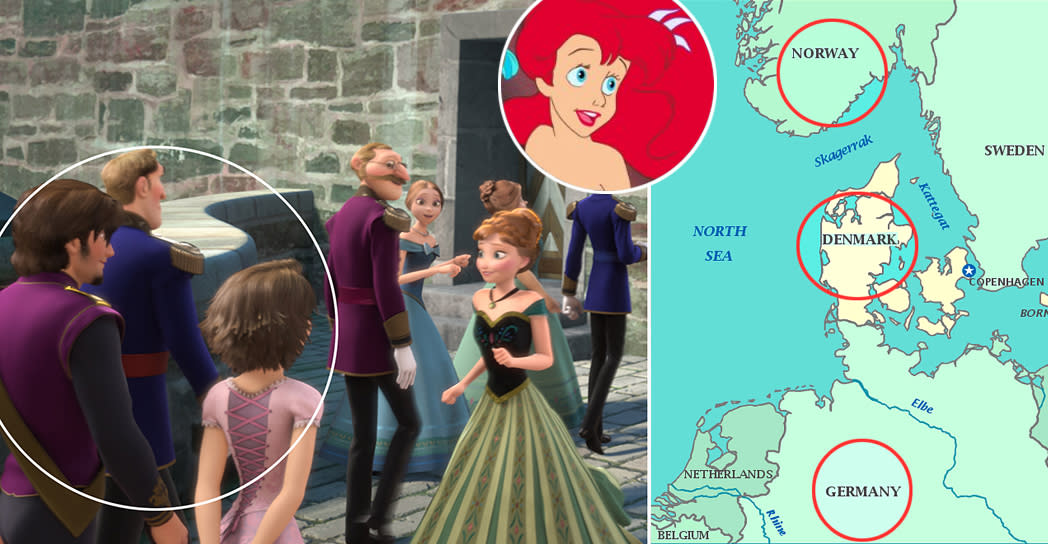
WARNING: SPOILERS.
We've heard of Easter eggs, but this is ridiculous... and a whole lot of fun.
The wonderful worlds of Disney and Pixar have ardent fans, and then there are these guys. Immersed in the Magic Kingdom, the web is crawling with super sleuths who dig deep into the nitty-gritty storytelling, finding secret, hidden links between the characters and plotlines, in search of some over-arching master plan lurking beneath the pastel surface.
Here are some of the best Disney- and Pixar-related theories currently being discussed and debated:
1. "Frozen," "Tangled," and "The Little Mermaid" take place in one reality.
As we pointed out back in December, there's a moment in "Frozen" where you can see Rapunzel and Flynn/Eugene, the protagonists of "Tangled," arriving for Elsa's coronation.
Geographically, this isn't too hard to justify. "Tangled" arguably takes place in Germany (the story of Rapunzel is originally a German fairy tale) and "Frozen" seems to take place in Norway (based on various architectural/cultural nods throughout as well as the Scandinavian setting of its origin fable, Hans Christian Andersen's "The Snow Queen").
[Related: 'Frozen' Secret Reference (With a Famous Family Connection) Revealed]
But why are Rapunzel and Flynn at the party? This is where it gets fun, via a theory presented by Beautiful Syn that captured many a Facebook feed this week.
The theory posits that Elsa and Anna's parents from "Frozen" were en route to Rapunzel's return celebration when their ship sank. As the boat sailed from Norway to Germany, it would've passed near Denmark, which is where it sank.
How do we know this? Because you can see the wreckage in "The Little Mermaid," which arguably takes place around Denmark (it's another Andersen tale, set in his native land).
Consider us sold.
2. Andy's mom is Jessie's original owner in "Toy Story."
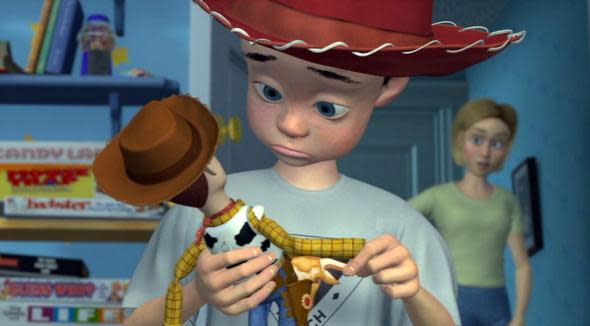
We like this one, too, and there's really no evidence to the contrary, so we vote to put this into official Pixar canon as soon as possible.
Jessie, the rootin', tootin' Yodeling Cowgirl from the "Toy Story" movies, is one of Woody's best friends and Buzz Lightyear's eventual ladylove. Jessie is haunted by the memory of Emily, her former owner who one day inexplicably left her in a charity box, a traumatic experience that has caused Jessie to suffer from claustrophobia and an intense fear of being put into storage.
This "Emily" might very well be Andy's mom, who's referred to only as Ms. Davis throughout the "Toy Story" trilogy.
[Related: From Fairy Tale to Feature: How Some Disney Classics Took the Long Road]
Jessie's cowgirl hat has a rather distinctive design with its white band and white lace... in fact, it very much looks like the hat that Andy himself is seen wearing from time to time.
It's also the same hat we've seen in a flashback sequence — on Emily's bed!
There's more evidence provided in Jon Negroni's theory, which you can read and see illustrated at Slate.com. It certainly makes for an interesting post-script to Negroni's gonzo Pixar theory masterpiece ...
3. The grand unification Pixar theory.
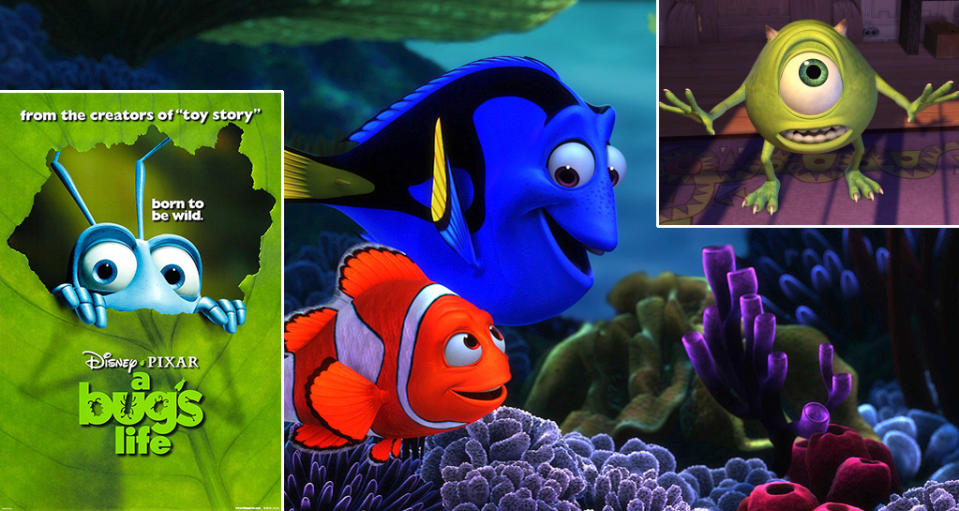
This one will really get your head spinning. Jon Negroni weaved together the very fabric of the Pixar universe last summer when he proposed several unifying connections between every single Pixar film, from "Toy Story" (1995) to "Monsters University" (2013).
For the record, that's the following titles:
"Toy Story" (1995)
"A Bug's Life" (1998)
"Toy Story 2" (1999)
"Monsters Inc." (2001)
"Finding Nemo" (2003)
"The Incredibles" (2004)
"Cars" (2006)
"Ratatouille" (2007)
"Wall-E" (2008)
"Up" (2009)
"Toy Story 3" (2010)
"Cars 2" (2011)
"Brave" (2012)
"Monsters University" (2013)
Negroni proposes that the entire Pixar filmography is actually a multi-tiered tale of an epic struggle between humans, animals and sentient machines. The origin of this struggle can be traced back to the Witch in "Brave," which is the first story on the chronological timeline (it takes place in the Dark Ages).
Here are some of the highlights of this theory:
— "Brave" features a bear who acts like a human (Merida's mother). This is the beginning of Pixar's chronicle of animals with human characteristics and intelligence.
— The Witch's magical doors actually serve as time portals, which means she's visited the future realities of later Pixar films. This is evidenced by her drawing of Sully from "Monsters Inc." and her wooden carving of the Pizza Planet truck (a vehicle that appears in some form in almost every Pixar film), both on display in her shop if you look closely.
— It is possible that Charles Muntz, the antagonist from "Up," heard rumor of an 'intelligent rat' in "Ratatouille," which inspired him to create the translator collar to harness the thoughts of animals, particularly his dogs.
— In support of the above observation, we know that the events of "Ratatouille" take place before the events of "Up," as evidenced by the postcard from Carl and Ellie (from "Up") on Andy's wall in "Toy Story 3." As the third "Toy Story" takes place in 2010, we can assume the events of "Up" take place sometime later.
— In "Up," Carl is forced to give up his house to a corporation that's expanding the city. This is very likely Buy N Large, aka BNL, the corporation responsible for junking the entire planet in "WALL-E." BNL is foreshadowed in "Toy Story 3" as well, as a pair of Triple A batteries sport the BNL logo.
— BNL's ability to create advanced artificial intelligence like WALL-E probably comes from harnessing and adapting the technology honed by Syndrome in the creation of the Omnidroid in "The Incredibles." Director Brad Bird has confirmed that "The Incredibles" takes place in "an alternate 1960s," which means it's a prequel to several Pixar films.
There's more, a lot more, including the idea that the reason why no humans show up in "A Bug's Life" is because it takes place after the postapocalyptic events of "WALL-E." Read Negroni's entire Pixar Theory (sometimes far-fetched, always pretty awesome) for the really big Pixar picture.
4. The grand unification Disney theory.
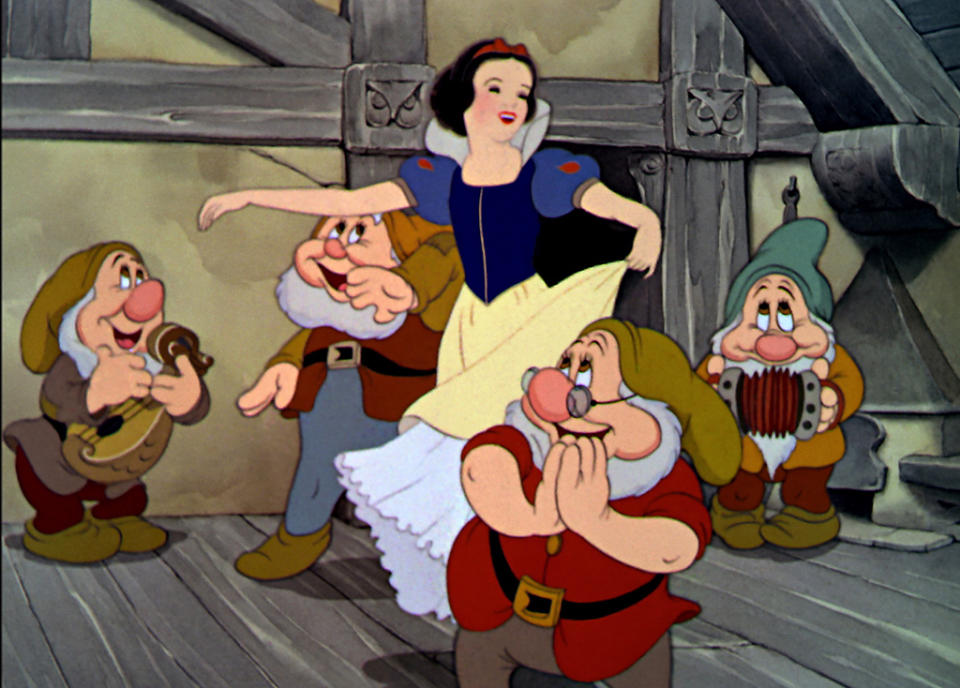
Josh Butler's follow-up to Jon Negroni's exhaustive Pixar Theory attempts to link 30 of Disney's animated features into a single timeline, mostly via the many Easter eggs that have appeared throughout almost every film (some of which are mentioned in the first section of this post).
Butler's approach is a bit more fanciful than Negroni's and sometimes requires more of a stretch of the imagination, but it's no less impressive as it spans over 70 years worth of Disney movies, from "Snow White and the Seven Dwarves" (1937) to "Tangled" (2010).
Some of the more outrageous (and very amusing) elements of Butler's theory are as follows:
- The concept -- and practice -- of magic is key to discovering the single timeline. One of the main players in this is Genie from "Aladdin" (1992), whose near-madness not only comes from being trapped inside a lamp for centuries but also from his ability to "perceive events outside of the linear timeline." Genie's ability to access different times and places is illustrated by his cameo appearance in "Pocahontas" (1995) ... and by his lamp's appearance in "The Princess and the Frog" (2009).
- One of Disney's most beloved and tragic characters, Bambi's mom, makes postmortem appearances in "The Jungle Book" (1967), "The Rescuers" (1977) and "Beauty and the Beast" (1992). This ability to time travel (and, uh, still be alive) comes from being one of the genetic experiments seen in the direct-to-video sequel, "Leroy & Stitch" (2006). This, of course, also explains the various cameo appearances throughout the Disney universe of "The Lion King" scene-stealers Timon and Pumbaa.
Hey, why not? You can read all of Butler's massive theory (with plenty of visual aids) here.
5. "Aladdin" actually takes place in the future.
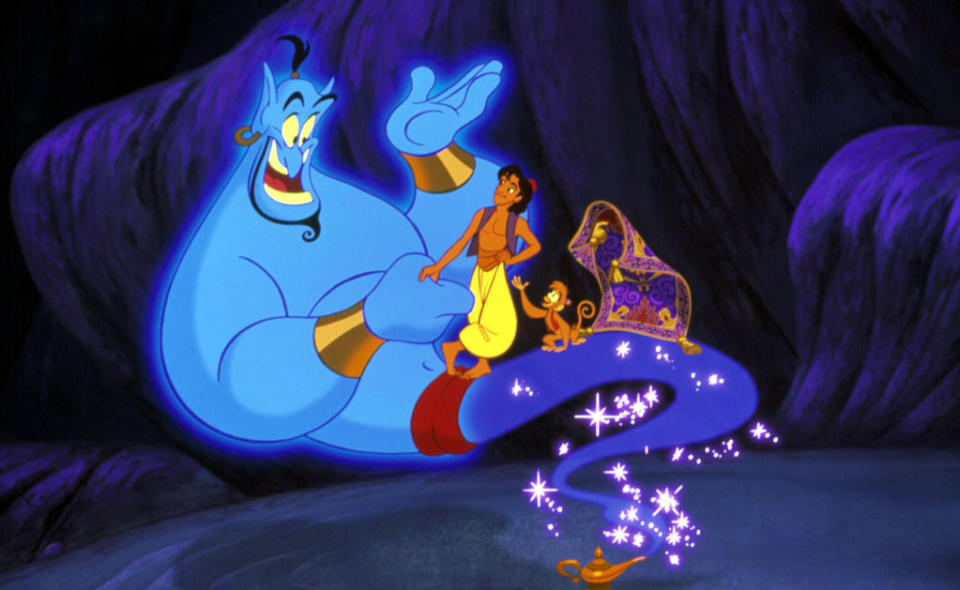
Who'da thought that a rapid-fire throwaway Robin Williams joke would spawn such a massive conspiracy theory?
If you remember, in "Aladdin" (1992), the hyperactive, near-mad Genie dismisses Aladdin's clothes as "so third century." But if the Genie has been trapped in the lamp for over 10,000 years, how does he know about third century fashion trends? And, come to think of it, how is he able to do impersonations of such 20th century personalities as Jack Nicholson and Groucho Marx?
That's because, per a concept laid out on silentcommentaryarchive.tumblr.com, "Aladdin" actually takes place in the future — at least 10,300 A.D. It's "a post-apocalyptic world where only Arabic (and some Greek) culture [has] survived" and where "the name 'Arabia' has been corrupted to 'Agrabah.'"
The theory also semi-explains the changes over the centuries that have affected the Islamic religion and the presence of "technological marvels" like flying carpets and genetically engineered parrots that sound like Gilbert Gottfried.
To quote Iago himself, "What the HE--?"
Meanwhile, "Frozen" is now available on Blu-ray, DVD, Digital Download, and all that good stuff.
Solve the daily Crossword

